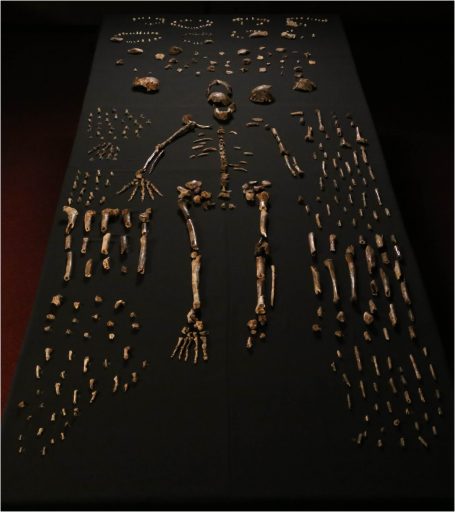Last week, Head Teacher, Mr Hadley-Pryce presented our new and exciting extra curricular ‘Homo naledi’ project. This is a fantastic opportunity for our Year 12 and 13 students who have an interest in anthropology.
Mr Hadley-Pryce said “People have been discovering fossils of ancient humans and our ancestors over the last two centuries, and these finds are so rare and precious that they are often carefully guarded secrets. Some paleoanthropologists refuse to share any of their finds with colleagues or the public, until they have been fully researched and scientific papers published. This can take years or even decades. Homo naledi was something different.
When Rick Hunter and Steven Tucker discovered the first fossils of Homo naledi on 13th September 2013, Professor Lee Berger of the Evolutionary Studies Institute (ESI) and the Centre of Excellence in Palaeosciences (CoE Pal) at the University of the Witwatersrand (Wits) was leading the project. He quickly decided on seeing the volume of fossil material present in the Rising Star cave system, that this would need to be a collaborative effort.
He advertised for a team of ‘underground astronauts’ to excavate the fossils, hiring a team of 5 women who were small, slim and expert in both palaeoanthropology and caving. Over the next 2 years the excavated 1550 separate fossils, passing down a 20m chute with a 19cm squeeze into the Dinaledi Chamber to do so. With so much material, Lee Berger again went to social media, putting together a large international team of specialists to analyse the finds. Scientific papers were published on the open access eLife site, and over 200 bones were 3D scanned and uploaded to the MorphoSource website
This extraordinary generosity of spirit has inspired us to instigate this project, in which we will attempt to build our own complete Homo naledi skeleton. This will be far from easy as many body parts may be incomplete or missing, and gaps will need to be filled. Computer science students will download and print the 3D fossils using our 3D resin printer. These will then be passed top our expert art team, who will paint the monochrome resin bones to give them an authentic fossil appearance. Finally, the most difficult part.
Our large team of human anatomy enthusiast will learn about human biomechanics by taking apart and reassembling a replica Homo sapiens skeleton. With this experience, and the fact that all fossil bones have been clearly identified by the team at Wits, they will attempt to build a complete Homo naledi skeleton. This is an incredible challenge but also extremely rewarding one, and an opportunity for our students to learn so much about ancient humans, who lived in South Africa a quarter of a million years ago.”




